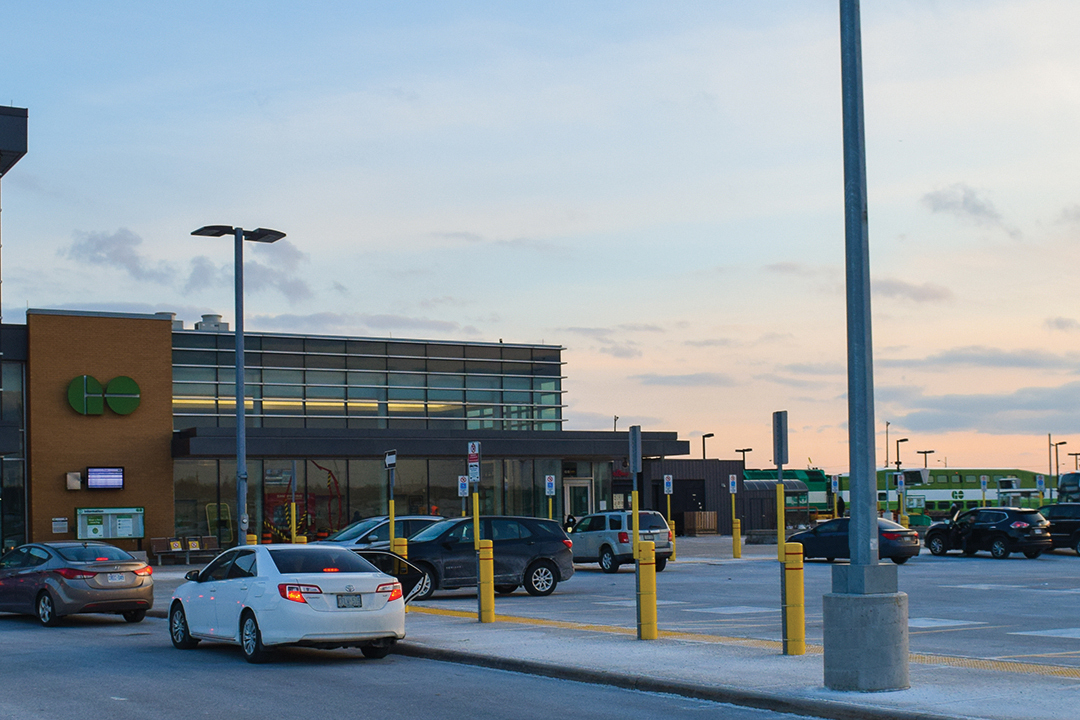Trains were once the guiding lines for civil development. With trains came the development of railway towns. Train stations were not built around where people settled — people would settle around where train stations were built.
However, less than 100 years after trains came into existence and seemed to become ineffaceably entrenched into society, governance, and culture, they were effaced nonetheless by the automobile. Trains were abandoned as the primary threads of the tightly knit sweater of industrial civilization. Many suburbs and newer parts of cities in North America would be designed around cars. Highways were given precedence over rail lines, and most people began to drive to their destinations rather than take trains. In southern Ontario, many people started to exclusively drive to their workplaces, many of which were in downtown Toronto.
This shift in priorities has been reflected in the shortcomings of Ontario’s GO Train and rapid transport systems.
Every day, U of T students, faculty, and alumni, as well as Ontarians at large, rely on GO trains to go not only to school and home but also to places of work and leisure. In the 1960s, the GO train system began as a single commuter line along the lakeshore in response to mass immigration and the development of suburban living. The GO train catered to suburbanites who went into downtown Toronto for work in the morning and returned home in the afternoon. As time passed, more lines from other suburbs in the region beyond the lakeshore were created, allowing even more people to work or attend university and still avoid highway buildup.
Still, more than 50 years later, the GO system never really evolved beyond commuter rails — trains that bring passengers to Toronto in the morning and stay idle until the evening when they bring passengers home.
It does not take a great visionary to identify the wasted potential. All GO trains from the suburbs travel toward and away from Toronto. There are no lines for the express purpose of connecting one suburb to another unless they happen to be on the way to Union Station. While it is true that there are alternative transportation options — like city buses, streetcars, and even GO buses run by the GO commission — they pale in comparison to the speed, efficiency, and convenience of dedicated rapid rail lines.
Perhaps the most tragic waste of time and money is how most GO trains only run during commuting hours in the morning and evening with nothing afterward. If you had a long day at work, or you wanted to grab some coffee with your friends after class and happen to miss your train, then — oops! I guess you just have to stay the night or find some other way of getting home.
As of now, GO buses are the de-facto substitute for GO trains; they run during the hours when trains don’t, and anywhere a GO train stops, GO buses stop, although the reverse is not always true.
The issue with GO buses, unlike GO trains or other railway transit, is that buses are essentially big cars and face all the disadvantages of automobiles. A commuter taking the GO bus has to worry about overcrowding, cramped spaces, and — worst of all — traffic.
The issue of general accessibility and utility isn’t limited to time but also expands to space. Many GO stations are not situated close enough to all of the places where people live for them to be able to walk or bike to the station. While there are incentives for residential development around stations, GO station parking lots prevent any commercial or residential development from happening. And since there are no residential developments nearby, commuters need to drive to the stations and the parking lots become necessary. This creates an awful cycle — an ouroboros made of drab, gray concrete.
For younger people like students, who often don’t have access to cars that they can abandon at a parking lot for an entire day, or for those that don’t drive, this brings another obstacle of accessibility. At the moment, this transit problem is only haphazardly solved by city buses, which face all the same problems as GO buses.
All hope is not lost though. The existence of barren, concrete wastelands surrounding many stations remains a problem, but stations like Port Credit GO and Cooksville GO present an ideal situation, with stations built in places people actually live or want to go to. Community-integrated stations like these serve as examples of how GO train stations should work.
Metrolinx has also made efforts to increase the frequency of trains on certain lines. In 2013, the Lakeshore line expanded to all-day service, with trains arriving every 30 minutes. If you miss your train, don’t fret, another will come soon — if you live along the lake, that is.
But perhaps the most important development is the 2025 expansion project, which will introduce interconnecting lines between suburban destinations. Further development such as the implementation of light rail transit in Peel and more underground subway lines in Toronto bring hope for the future of public transit — and for a more connected Ontario.
Sulaiman Hashim Khan is a first-year humanities student at St. Michael’s College.


